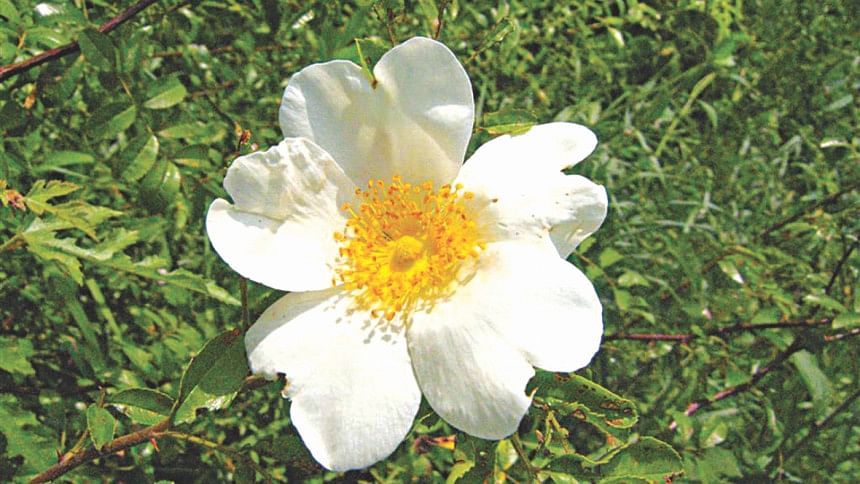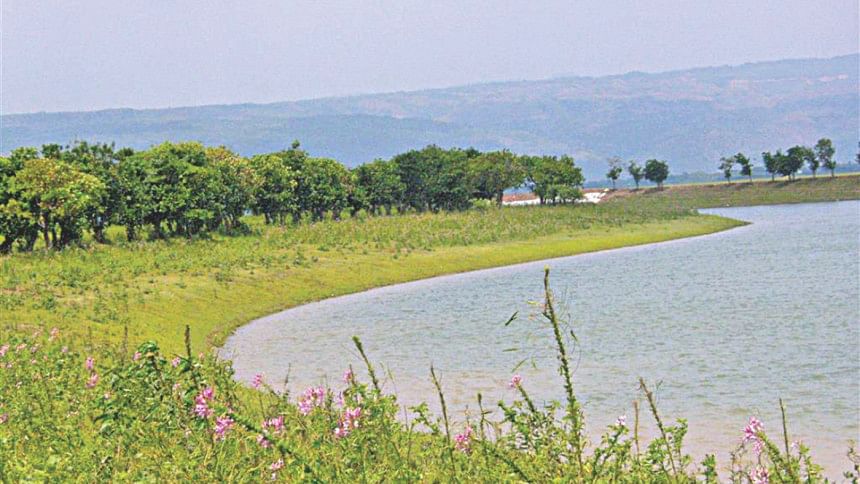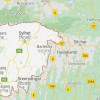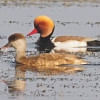Nature Quest: In quest of the Jewels of Haors

People say that we do not have the tradition of rose cultivation here in Bangladesh. The rose cultivation in our country is entirely a new phenomenon. The Middle Eastern or European countries are referred to as the origin of rose.
What is surprising, however, is that we have an indigenous variety of rose amidst our very nature and it is in the wetlands of the Tanguar Haor in Sunamganj and other haors of greater Sylhet region. This particular variety may exist in the low-lying areas of Netrokona as well.
This plant species is thought to be the lone water resistant species and they remain under water for quite a long time in a year. When the water recedes, new leaves and buds begin to sprout.
This wild variety grows on relatively high grounds. In the dry season, these places are overgrown with a myriad of weeds and creepers.
Apart from wild roses, there is a variety of wild strawberry in the Tanguar Haor. So, it can be said that rose and strawberry are not the monopoly of the cold countries; they can grow and survive in hot and humid countries like ours.
I had been to the haor to look for wild rose and strawberry in April last year. I stopped for a while beside a Hijol (Barringtonia acutangula) bush after going one and a half hour on an engine-driven boat. I discovered a rose bush just by the side of hurhuri (Cleome spinosa) and ghagra. To my surprise, I found two withered roses in the tree.
I desperately looked for a tree with roses and succeeded after a while. I took photos of them. I found two bushes -- one full of flowers and the other with only one flower.
I got back to my boat. After a while, I reached a dam adjacent to the Golabari camp. I got off the boat and started walking. This part of the haor is pretty quiet with long avenues of Hijol, Koroch (Derris indica) and Borun (Crataeva nurvala). In the nearby slope, there was a thicket.
I kept walking and found three kids who are young cowboys. As they asked me what I was looking for, I showed them a photo of wild strawberry and they readily recognised it. They told us that they liked this wild strawberry a lot and joined us in our search. We found the flowers and the fruits scattered on a vast area.
We came across another rare plant after covering some distance. I saw the tree in the Brooklyn Botanical Garden of New York. The fruit is like a patka. Its Bangla name is latafotkari (Cardiospermum halicacabum) and English name is love in a puff.
We could not locate any other latafotkari. In this regard, it can be assumed that the tree is very likely to be an endangered species. This tree, however, is not listed on the checklist of IUCN. We came across a few more rose bushes. We spotted quite a few eye-catching Dudhialata (Oxystelma secamone) in the endangered Nalkhagra (Phragmites karka) bush. We also found the Hurhuri bushes undulating in the erratic breeze. The borun flowers illuminated the whole place. We walked to gather some more flowers.
A few words on wild rose, strawberry and latafatkari.
WILD ROSE
Locally known as Seunti, the wild rose grows in thick bushes. Its branches are straight and the leaves are 5-10cm long. The leaves and branches can be smooth or shaggy. The flowers have five white petals and 1.7-3cm long. The fruits are 1-2cm long. The flowering season is from February to June. This variety of rose is found in a limited scale in India and Myanmar. Its scientific name is Rosa clinophylla.

WILD STRAWBERRY
This creeper usually sticks to the ground. They resemble Thankuni (Centella asiatica) a lot in nature. The plant's stem is very long, slender and shaggy. The flowers are yellow, diagonal, and 1.5-2.5cm long. The flowering season lasts from February to June. This strawberry is found in a few South Asian countries. Its scientific name is Duchesnea indica.

LATAFATKARI
This woody creeper is found in the torrid zones of Asia and Africa. They usually grow up to 10 feet. The green and ripe fruits are more attractive than the flowers. The trees in haors are different in shapes and sizes from the ones that grow in plain land. Locally known as kopalfutki, noafutki, kanfutki, their leaves are 2-4cm long and edged. The flowers are 2-3mm long. The flowers are 1.5-4cm wide. There are three black seeds in a mature brown fruit. The flowering season lasts from November to June. The roots and the seed oil of this plant are used for treating rheumatism. The scientific name is Cardiospermum halicacabum.

 For all latest news, follow The Daily Star's Google News channel.
For all latest news, follow The Daily Star's Google News channel. 








Comments